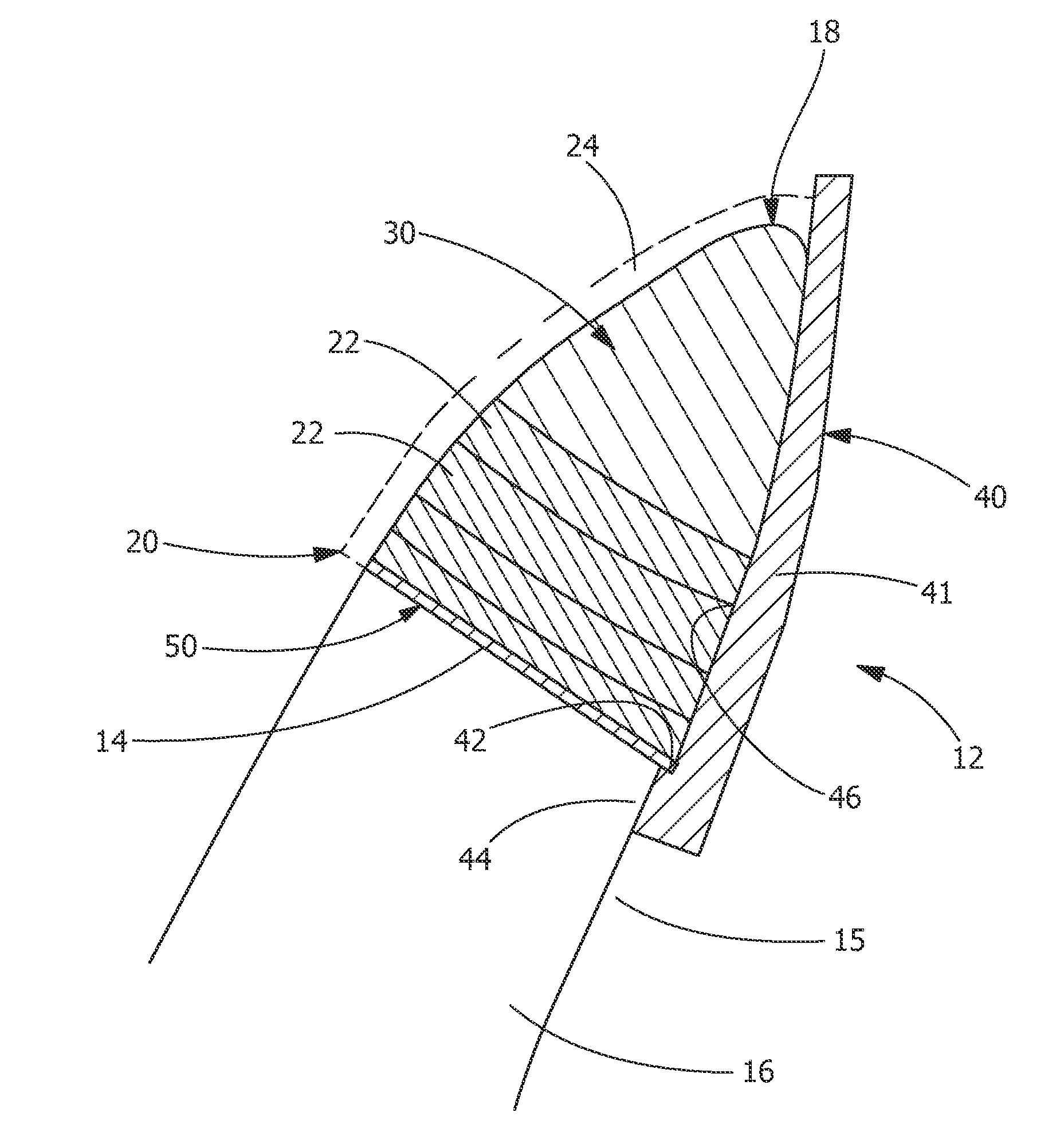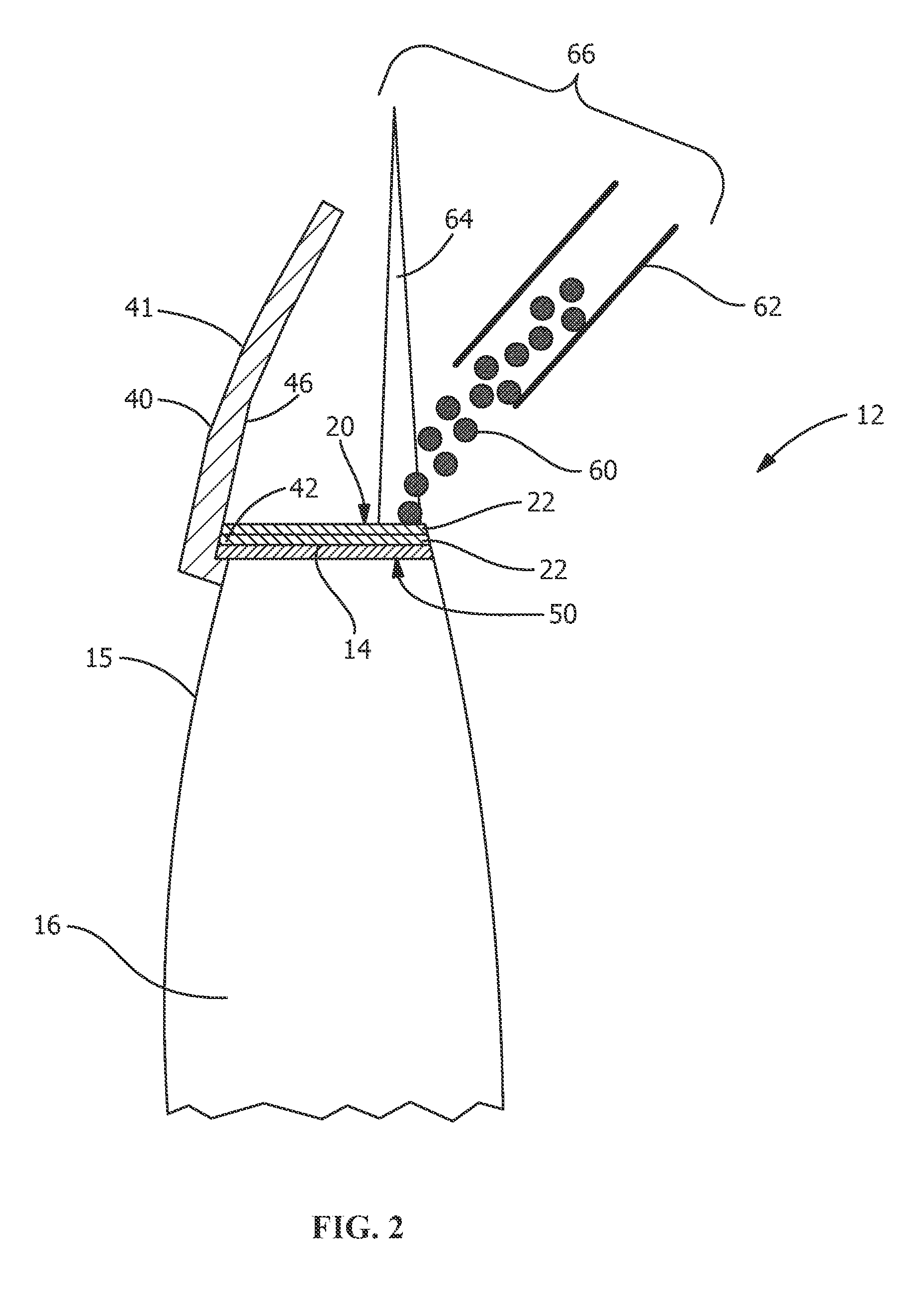Methods of forming blades and method for rendering a blade resistant to erosion
a technology of turbine blades and blade chords, which is applied in the direction of turbines, manufacturing tools, machines/engines, etc., can solve the problems of substantial erosion of rear-stage turbine blades, loss of blade chord width, and component prone to erosion
- Summary
- Abstract
- Description
- Claims
- Application Information
AI Technical Summary
Benefits of technology
Problems solved by technology
Method used
Image
Examples
Embodiment Construction
[0017]Provided are methods of forming a blade for a turbine and a method for rendering a turbine blade resistant to erosion that do not suffer from the drawbacks in the prior art. One advantage of an embodiment of the present disclosure is that the method allows for stronger and less stressed joining of two dissimilar metals. Another advantage is the backing plates of the present disclosure provide support for laser cladding buildup on the leading edge of the blade. Yet another advantage is that the cladding of the erosion resistant material is built up from the backing plate and the cutoff edge of the blade simultaneously. Another advantage is a larger melt pool can be produced using the backing plate of the present disclosure, which allows for more cladding powder to be deposited into the melt pool. Yet another advantage of an embodiment of the present disclosure is that the method allows for greater cladding application speeds and reduced cycle time because of the larger melt poo...
PUM
| Property | Measurement | Unit |
|---|---|---|
| thickness | aaaaa | aaaaa |
| thickness | aaaaa | aaaaa |
| thickness | aaaaa | aaaaa |
Abstract
Description
Claims
Application Information
 Login to View More
Login to View More - R&D
- Intellectual Property
- Life Sciences
- Materials
- Tech Scout
- Unparalleled Data Quality
- Higher Quality Content
- 60% Fewer Hallucinations
Browse by: Latest US Patents, China's latest patents, Technical Efficacy Thesaurus, Application Domain, Technology Topic, Popular Technical Reports.
© 2025 PatSnap. All rights reserved.Legal|Privacy policy|Modern Slavery Act Transparency Statement|Sitemap|About US| Contact US: help@patsnap.com



